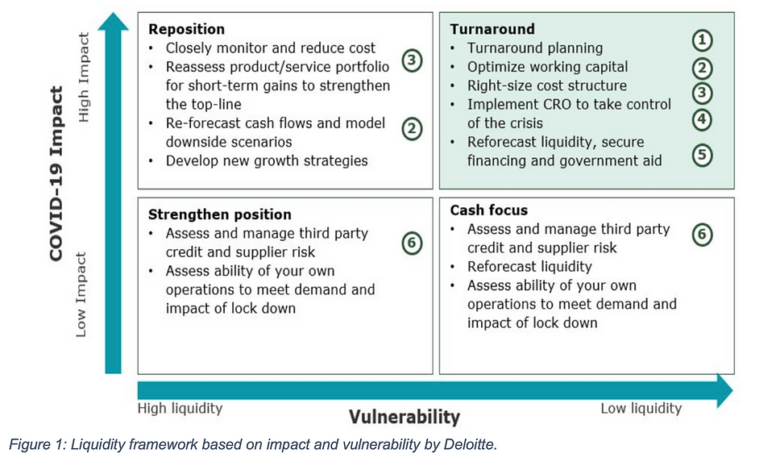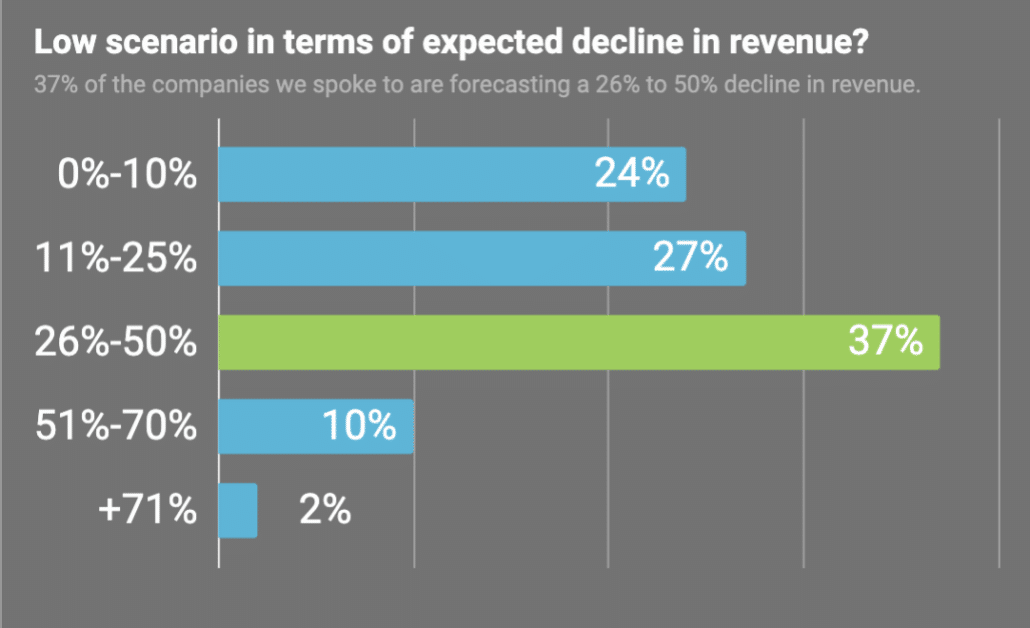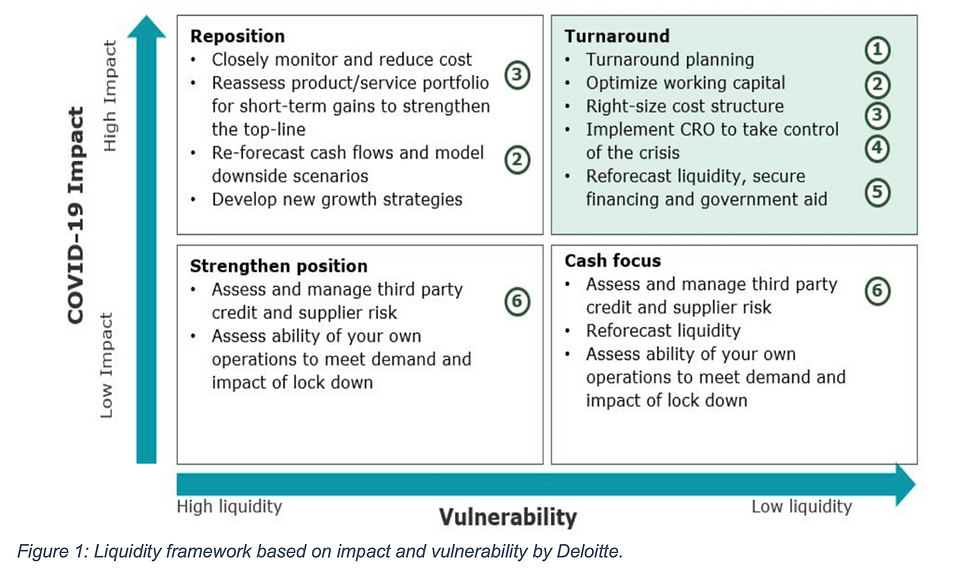
Financial Planning Analysis Priorities During Coronavirus Crisis
Financial planning analysis priorities during coronavirus crisis are crucial for navigating the economic shifts. The pandemic dramatically altered financial goals, from homeownership to retirement, and impacted various income levels differently. People adapted by adjusting their budgets, building emergency funds, and reevaluating investment strategies. Understanding these shifting priorities and strategies is key to weathering economic uncertainty and ensuring long-term financial security.
This analysis explores the significant impact of the coronavirus crisis on financial planning, examining adjustments to emergency funds, investment strategies, debt management, savings and budgeting, insurance, and the need to adapt to a changing economy. The crisis highlighted the importance of proactive planning, diversification, and resilience in personal finances. The article also delves into the unique challenges faced by small businesses and the critical link between financial well-being and mental health.
We’ll analyze methods used to adapt to the changing economic landscape and examine how individuals and businesses can best position themselves for future success.
Impact on Financial Goals
The coronavirus pandemic drastically reshaped personal finance landscapes, forcing individuals and families to reassess their financial priorities and strategies. The economic fallout, characterized by job losses, business closures, and fluctuating markets, significantly impacted the feasibility and timing of various financial goals. This analysis explores the profound effects of the pandemic on typical financial objectives and the subsequent adjustments in financial planning.The pandemic’s economic consequences triggered a shift in financial planning priorities, with immediate needs often taking precedence over long-term goals.
Individuals and families faced unprecedented challenges in maintaining their financial stability, leading to a significant re-evaluation of their financial strategies. This shift was particularly evident in the way people approached savings, investments, and debt management.
Impact on Homeownership
The pandemic’s impact on homeownership was multifaceted. While some experienced increased home values and a surge in demand, others faced job losses and reduced income, making it harder to maintain mortgage payments or afford property taxes. Many individuals found themselves in a precarious situation, needing to carefully consider their options and explore various financial aid programs. This uncertainty underscored the importance of proactive financial planning and contingency measures.
Impact on Retirement Planning
Retirement planning was significantly affected by the pandemic. Reduced investment returns, market volatility, and increased uncertainty about future income streams led many to re-evaluate their retirement savings and timelines. The pandemic highlighted the importance of having a diversified investment portfolio and a realistic retirement income projection, considering potential economic shocks. Individuals may have adjusted their retirement goals or considered delaying retirement to mitigate the financial impact.
Impact on Education Planning
The pandemic presented challenges for families with children planning for higher education. Unexpected job losses and reduced incomes forced many to reconsider their education savings strategies or seek alternative funding sources. Tuition costs, along with the rise in living expenses, made it more challenging for families to meet their educational goals. This prompted a greater focus on exploring scholarships, grants, and financial aid opportunities.
Impact on Different Income Levels
The pandemic’s financial impact varied significantly across income levels. Low- and middle-income households often experienced greater financial hardship due to job losses and reduced earning potential. High-income individuals, while not immune to the economic downturn, generally had more financial resources to weather the storm. This disparity in resilience underscored the importance of accessible financial resources and support systems for vulnerable populations.
Methods for Adjusting Financial Plans
Individuals employed various methods to adjust their financial plans during the crisis. These included cutting non-essential expenses, seeking additional income sources, consolidating debts, and exploring government assistance programs. The methods varied significantly depending on individual circumstances and financial resources.
Pre-Crisis vs. Post-Crisis Financial Priorities
| Demographic Group | Pre-Crisis Financial Priorities | Post-Crisis Financial Priorities |
|---|---|---|
| Young Professionals | Homeownership, career advancement, savings for future investments | Debt reduction, emergency fund building, career stability, and securing income streams |
| Families with Children | Education savings, homeownership, family vacations | Financial security, childcare, and education savings strategies, managing household expenses |
| Retirees | Maintaining current lifestyle, travel, and leisure | Ensuring retirement income, managing expenses, and potential adjustments to lifestyle |
Emergency Fund Strategies: Financial Planning Analysis Priorities During Coronavirus Crisis
Navigating economic uncertainties, especially during crises like the coronavirus pandemic, necessitates a robust emergency fund. This fund acts as a safety net, providing financial security during unexpected events, whether it’s a job loss, medical emergency, or sudden home repair. Understanding the importance and building a sound emergency fund strategy is crucial for financial resilience.
Importance of Emergency Funds in Times of Crisis
Emergency funds are vital in times of crisis. They provide a financial cushion against unforeseen expenses, preventing individuals and families from accumulating debt or depleting savings for essential needs. During economic downturns or health crises, the ability to cover unexpected costs without resorting to high-interest debt becomes paramount. A healthy emergency fund allows for a more stable and stress-free response to unforeseen circumstances.
Strategies for Building and Maintaining Emergency Funds
Building and maintaining an emergency fund requires a strategic approach. This involves setting realistic savings goals, creating a budget to allocate funds, and consistently contributing to the fund, even during challenging times. Regular contributions, even small amounts, over time significantly increase the fund’s size and provide a strong safety net.
Examples of Different Emergency Fund Strategies
Several strategies can be implemented to build an emergency fund. One approach is the “500-rule,” where individuals aim to save 3-6 months’ worth of living expenses in an emergency fund. Another approach involves creating a dedicated savings account with automatic transfers from checking accounts. Some individuals establish specific goals, such as saving a certain amount each month, and link the savings to a tangible reward or milestone.
This fosters motivation and helps maintain consistent contributions.
Factors to Consider When Determining Emergency Fund Adequacy
Several factors influence the adequacy of an emergency fund. Consider the individual’s current financial situation, including income, expenses, and outstanding debts. Unexpected events, such as significant medical expenses or job loss, should also be considered when calculating the required amount. Contingency planning should incorporate potential future scenarios and inflation projections.
Emergency Fund Strategies Table
| Emergency Fund Strategy | Pros | Cons |
|---|---|---|
| 500-Rule (3-6 months’ living expenses) | Provides a substantial safety net, reduces stress during crises. | May be challenging to achieve for lower-income individuals, potentially requiring significant time. |
| Dedicated Savings Account | Easy to track savings, provides clear visualization of progress. | Requires discipline to avoid accessing funds for non-emergency purposes. |
| Automatic Transfers | Ensures consistent savings, avoids procrastination. | May require adjusting budgets and expense tracking. |
| Goal-Oriented Savings | Increases motivation and commitment to savings, allows for visual progress tracking. | Requires setting clear goals and potentially adjusting goals based on circumstances. |
Investment Strategies During Uncertainty

Navigating volatile markets requires careful consideration of investment strategies. The COVID-19 pandemic significantly impacted global economies and financial markets, leading to unprecedented uncertainty and volatility. Understanding the impact of this crisis on investment markets and adapting strategies accordingly became crucial for preserving and growing wealth.Investment strategies adopted during the crisis varied widely, reflecting different risk tolerances and investment goals.
Investors needed to balance preserving capital with potentially seeking opportunities amidst the turbulence. This required a thorough understanding of market dynamics and a flexible approach to asset allocation.
Impact of the Crisis on Investment Markets
The COVID-19 pandemic caused a significant downturn in global stock markets, with significant fluctuations in asset values. Lockdowns and economic disruptions led to uncertainty about future economic growth and corporate earnings, impacting investor confidence and driving volatility. This uncertainty influenced market sentiment and created a period of high risk aversion.
Comparison of Investment Strategies During the Crisis
Several investment strategies were employed during this period. Some investors favored a defensive approach, focusing on preserving capital by shifting towards safer assets like government bonds and cash equivalents. Others sought opportunities in undervalued sectors or assets they believed would recover quickly, such as technology stocks or healthcare. The choice of strategy depended largely on individual risk tolerance and investment horizon.
Factors Considered by Investors
Several key factors influenced investment decisions during the crisis. These included assessing the potential impact of the pandemic on different sectors, evaluating the creditworthiness of borrowers, and understanding the long-term implications of government policies and interventions. Investors also paid close attention to news and expert analysis, trying to anticipate the direction of the markets. Diversification across asset classes and geographic regions was also a common consideration to mitigate risk.
Diversification and Risk Management
Diversification and risk management are crucial during times of uncertainty. A diversified portfolio helps to reduce the impact of market fluctuations on overall returns. Investors should consider diversifying across different asset classes, such as stocks, bonds, and real estate. Risk management strategies involve setting realistic expectations, limiting losses, and establishing stop-loss orders.
Investment Strategies Table
| Risk Tolerance | Investment Strategy | Asset Allocation | Description |
|---|---|---|---|
| Low | Defensive | High-quality bonds, cash equivalents, money market funds | Preserving capital is the priority, aiming for low-risk, stable returns. |
| Medium | Balanced | 60% stocks, 40% bonds | Balancing risk and return, including a mix of stocks and bonds to moderate risk exposure. |
| High | Growth | 80% stocks, 20% bonds | Seeking higher returns with a larger proportion of stocks. Requires a longer investment horizon and a tolerance for potential volatility. |
Debt Management and Repayment
The coronavirus crisis significantly impacted individuals’ financial stability, often exacerbating existing debt burdens and creating new financial pressures. Reduced income, job losses, and increased expenses created a challenging environment for managing and repaying debts. Understanding the effects of the crisis on personal debt is crucial for developing effective strategies to navigate this challenging economic landscape.The crisis led to a surge in personal debt, as individuals faced unexpected expenses and relied on credit to cover their needs.
The stress of managing multiple debts during a period of economic uncertainty is considerable. Strategies for managing and repaying debts effectively during economic instability are crucial for long-term financial well-being.
Effects of the Crisis on Personal Debt
The economic downturn caused by the pandemic significantly impacted personal debt levels. Many individuals experienced reduced income, job losses, and increased expenses, leading to a rise in credit card debt, medical debt, and other forms of personal debt. This increase in debt burdens made it harder to meet existing obligations and caused further financial strain.
Methods for Managing and Repaying Debts During Economic Instability
Several methods can help individuals effectively manage and repay debts during economic instability. Prioritizing debts based on interest rates, creating a detailed budget, and exploring debt consolidation options are crucial steps. Developing a realistic repayment plan that aligns with the current financial situation is paramount.
- Prioritize high-interest debts: Focus on paying off debts with the highest interest rates first. This strategy minimizes the overall interest paid over time. High-interest debts accrue interest rapidly, making them a priority to address promptly.
- Create a detailed budget: A detailed budget is essential for understanding income and expenses. It allows individuals to track their spending and identify areas where they can cut back to free up funds for debt repayment.
- Explore debt consolidation options: Debt consolidation involves combining multiple debts into a single loan with a potentially lower interest rate. This can simplify repayment and potentially reduce overall interest costs.
Importance of Debt Consolidation and Restructuring During the Crisis, Financial planning analysis priorities during coronavirus crisis
Debt consolidation and restructuring can be vital tools for managing debt during economic instability. They offer the potential to reduce monthly payments, streamline repayment processes, and provide a fresh financial start. Consolidating debts can be a viable option for some individuals to manage their debts more effectively.
- Reduce monthly payments: Consolidating debts into a single loan can often reduce monthly payments, making it easier to manage the financial burden. This can be particularly helpful during periods of reduced income.
- Streamline repayment processes: Consolidating debts simplifies repayment processes, as there is only one loan to manage. This can improve financial organization and clarity, and reduce the complexity of multiple repayments.
- Provide a fresh financial start: Consolidating debts can offer a fresh financial start, helping individuals regain control of their finances. It can allow for a more structured approach to debt repayment, leading to increased confidence and improved financial well-being.
Examples of Successful Debt Management Strategies Implemented During the Crisis
Several successful debt management strategies were implemented during the pandemic. These strategies involved careful budgeting, prioritizing high-interest debts, and exploring options like debt consolidation or government financial aid programs. Individual circumstances and the severity of the crisis influenced the successful strategies.
- Negotiating with creditors: Some individuals successfully negotiated with creditors for temporary payment plans or reduced interest rates. This strategy proved effective in managing debt burdens during periods of economic hardship.
- Utilizing government aid programs: Government financial aid programs provided crucial support to many individuals struggling with debt during the crisis. These programs offered various assistance options, such as unemployment benefits or debt relief programs, allowing for a more manageable approach to repayment.
Impact of Government Financial Aid Programs on Debt Management
Government financial aid programs played a crucial role in supporting individuals facing debt challenges during the crisis. These programs provided essential financial assistance, allowing individuals to manage their debts more effectively. The impact of these programs varied depending on the specific program and the individual’s circumstances.
- Unemployment benefits: Unemployment benefits provided crucial income support, enabling individuals to allocate more resources towards debt repayment.
- Debt relief programs: Specific debt relief programs helped alleviate the burden of certain types of debt, such as student loans or medical bills. These programs provided temporary or permanent debt relief, depending on the specific circumstances.
Savings and Budgeting Practices
Navigating the economic uncertainties of the coronavirus crisis necessitates a proactive and adaptable approach to personal finances. Effective savings and budgeting strategies are crucial for maintaining financial stability and achieving long-term goals. These practices are not just about accumulating money; they’re about managing resources wisely during times of economic flux, ensuring financial security, and planning for the future.Budgeting and savings are essential tools to help mitigate the impact of economic instability.
They provide a roadmap to manage expenses, allocate resources, and prepare for potential setbacks. This is particularly vital during times of economic uncertainty, where unexpected expenses or income changes can quickly derail financial plans.
Importance of Savings and Budgeting During the Crisis
Savings act as a safety net during economic downturns. A robust emergency fund can provide a cushion against unexpected job losses, medical emergencies, or other unforeseen expenses. A well-defined budget helps individuals track their income and expenses, identify areas for potential savings, and make informed financial decisions. This allows for proactive adjustments in response to changing circumstances, preventing financial strain and maintaining a sense of control.
Different Budgeting Methods Suitable for the Crisis
Various budgeting methods can be employed to effectively manage finances during the crisis. Understanding the strengths and weaknesses of each method allows individuals to choose the one that best suits their needs and circumstances.
- Zero-Based Budgeting: This method allocates every dollar of income to a specific category, ensuring that all income is accounted for. It’s particularly useful for individuals who want a detailed overview of their spending habits. This method excels at highlighting areas for potential savings, making it ideal for identifying areas of potential reduction in spending. For example, a family using this method might allocate a certain percentage of their income towards entertainment and then identify specific ways to reduce this category (e.g., cutting down on dining out, opting for cheaper entertainment options).
- 50/30/20 Rule: This method categorizes expenses into needs (50%), wants (30%), and savings (20%). It provides a simple framework for balancing essential expenses with discretionary spending and saving. This approach is user-friendly, allowing individuals to allocate a portion of their income to savings while still enjoying discretionary spending. This method is especially suitable for those seeking a more straightforward budgeting approach.
- Envelope System: This method involves allocating cash to different categories (e.g., groceries, entertainment, rent) and using envelopes to track spending. It promotes awareness of spending patterns and helps individuals stick to their budget. This approach is especially helpful for visual learners who can easily track their spending in physical envelopes.
Adjusting Budgets in Response to Income Changes
Income fluctuations are a common occurrence during economic crises. Adapting the budget to reflect these changes is crucial for maintaining financial stability. Reviewing and adjusting the budget regularly, whether in response to a decrease or increase in income, is key. This ensures that spending aligns with current income levels, preventing overspending and accumulating debt. For instance, if income decreases, consider reducing discretionary spending (e.g., entertainment, dining out), or finding ways to increase income (e.g., taking on a side hustle, renegotiating expenses).
Significance of Long-Term Savings Plans Amidst Economic Instability
Long-term savings plans, such as retirement accounts or investment portfolios, remain vital even during times of economic instability. They provide a foundation for future financial security and help mitigate the impact of economic downturns. Maintaining consistent contributions to these plans, even during challenging times, can significantly benefit long-term financial well-being. This consistency allows for compounding growth and ensures that long-term goals, such as retirement, are not derailed by short-term economic fluctuations.
Budgeting Methods Effectiveness
| Budgeting Method | Effectiveness | Suitability |
|---|---|---|
| Zero-Based Budgeting | High; Provides detailed spending insights | Individuals seeking detailed spending analysis |
| 50/30/20 Rule | Moderate; Simple and straightforward | Individuals preferring a simple budgeting framework |
| Envelope System | High; Promotes awareness of spending | Visual learners; those seeking a physical budgeting method |
Insurance and Protection Planning
Navigating the financial uncertainties of a crisis like the coronavirus pandemic necessitates a robust insurance and protection strategy. While traditional financial planning elements remain crucial, understanding how insurance policies adapt and react to such situations is paramount. This involves more than just maintaining existing coverage; it requires a critical reassessment of needs and a proactive approach to safeguarding your financial well-being.
Importance of Insurance and Protection Planning During the Crisis
Insurance policies act as a safety net during times of economic disruption. They provide a financial cushion against unforeseen events, offering peace of mind and enabling you to focus on essential matters. This is especially true during a crisis, where the risk of job loss, illness, or property damage increases. Without adequate protection, individuals and families can face significant financial hardship.
Insurance safeguards against these risks, providing crucial financial support.
Adjustments to Insurance Policies and Coverage During the Crisis
The pandemic influenced insurance policies in several ways. Some companies adjusted their claims processes to handle increased demand more efficiently, while others introduced temporary waivers or modifications to coverage limitations. For example, some health insurance providers temporarily waived out-of-pocket costs for COVID-19-related treatment. Furthermore, certain policies experienced premium adjustments, either increases or decreases, depending on factors like risk assessment and claims trends.
Understanding these changes and the impact on your individual coverage is critical.
Examples of Insurance Strategies that Helped People During the Crisis
Many individuals leveraged their existing insurance policies to manage the financial burdens of the pandemic. For instance, those with comprehensive health insurance found that the coverage for unexpected medical expenses related to COVID-19 proved invaluable. Life insurance policies provided financial security for families who experienced loss of income due to the crisis. Likewise, property insurance offered a safety net for those facing unexpected repairs or damages to their homes.
Explore the different advantages of cima ethics confidentiality rules that can change the way you view this issue.
These examples demonstrate the vital role insurance plays in mitigating financial risks.
Impact of the Crisis on Different Types of Insurance Policies
The crisis significantly impacted various insurance types. Health insurance faced increased demand due to the prevalence of the virus, leading to potential policy adjustments and increased costs. Life insurance saw a heightened need as individuals reassessed their financial security and protection. Property insurance also experienced fluctuations, with some areas experiencing more claims related to weather events or property damage.
These examples highlight the diverse impacts of the crisis on different insurance categories.
Insurance Policy Comparison Table
| Insurance Type | Relevance During the Crisis | Example of Crisis-Related Impact |
|---|---|---|
| Health Insurance | Crucial for covering medical expenses, including those related to the virus. | Increased demand and potential adjustments to coverage or premiums. |
| Life Insurance | Provided financial security for families facing loss of income or support. | Increased awareness and demand for coverage. |
| Property Insurance | Protected against potential damage or loss, potentially increased claims related to disruptions. | Fluctuations in claims based on specific regions or weather events. |
| Disability Insurance | Essential for income replacement if unable to work due to illness or injury, including pandemic-related issues. | Increased need for coverage in cases of long-term illness or injury. |
Adapting to a Changing Economy
Navigating the current economic landscape requires a proactive and adaptable approach. The coronavirus crisis has significantly altered the job market, consumer spending patterns, and overall economic stability. Financial planning during this period must consider the evolving nature of the economy and incorporate strategies for resilience and long-term financial well-being.Economic shifts demand a flexible mindset and the ability to adjust financial goals and strategies.
This includes reevaluating existing plans, exploring new opportunities, and maintaining a continuous learning approach to economic trends. Understanding the current economic climate is crucial for making informed decisions about investments, savings, and debt management.
Upskilling and Reskilling Importance
The job market is constantly evolving, and the coronavirus crisis has accelerated this trend. Adapting to a changing economy necessitates upskilling and reskilling to remain competitive and relevant in the labor force. This includes acquiring new skills, enhancing existing ones, or exploring entirely new career paths. Individuals who are proactive in developing new skills are more likely to secure employment and adapt to evolving economic conditions.
Career Changes and Adjustments to Income Sources
The crisis has led to job losses, industry disruptions, and shifts in employment models. Individuals may need to consider career changes or adjustments to their income sources. Examples include pivoting to remote work, exploring freelance opportunities, or acquiring new skills in high-demand sectors. By diversifying income streams and exploring alternative employment models, individuals can build greater resilience and adaptability in the face of economic uncertainty.Examples of career adjustments include:
- Transitioning from a retail job to an online sales role, leveraging existing customer service skills and adapting to digital platforms.
- Developing skills in data analysis or software development to capitalize on the growing demand in technology-driven industries.
- Exploring entrepreneurial ventures, such as starting a small business or offering consulting services, leveraging existing expertise and entrepreneurial drive.
Staying Informed About Economic Trends
Staying informed about economic trends is essential for making sound financial decisions. Monitoring news reports, industry analysis, and economic indicators helps individuals anticipate potential shifts and adjust their financial plans accordingly. Economic forecasts and analyses provide insights into the overall economic outlook, enabling individuals to proactively adapt their strategies to potentially changing market conditions.
Role of Financial Advisors in Adaptation
Financial advisors play a critical role in guiding individuals through the process of adapting to a changing economy. They can help assess individual circumstances, provide tailored strategies for upskilling and reskilling, and offer guidance on adjusting investment portfolios and debt management plans. They can also provide insights into economic trends and offer proactive solutions to navigate the evolving financial landscape.
Experienced financial advisors offer valuable support by understanding the specific needs of their clients and providing tailored guidance.
Financial Planning for Small Businesses

Navigating the economic uncertainties brought about by the coronavirus crisis has presented unique challenges for small businesses. Many have had to adapt quickly to changing consumer demands, supply chain disruptions, and fluctuating market conditions. Financial planning becomes even more crucial during these times, allowing businesses to proactively address potential issues and maintain stability. A well-defined financial plan can provide a roadmap for navigating the turbulent waters and emerge stronger.
Unique Challenges Faced by Small Businesses
Small businesses often lack the financial reserves and resources of larger corporations. They are more vulnerable to economic downturns and disruptions. Reduced consumer spending, supply chain bottlenecks, and government restrictions have significantly impacted their operations. Maintaining profitability and cash flow has become a major concern. Additionally, access to capital and financing may be limited, further exacerbating existing challenges.
Importance of Financial Planning for Small Businesses
A robust financial plan provides a framework for navigating economic volatility. It allows small businesses to anticipate potential problems and implement strategies to mitigate their impact. Financial planning helps businesses identify and manage risks, optimize resource allocation, and ensure long-term sustainability. It also facilitates strategic decision-making, enabling businesses to adapt to changing market conditions and seize opportunities.
Strategies for Maintaining Cash Flow and Managing Expenses
Maintaining cash flow is paramount for small businesses. Strategies include: implementing cost-cutting measures without compromising quality, exploring alternative financing options, and actively managing accounts receivable and payable. Negotiating with suppliers for extended payment terms can provide crucial breathing room. Analyzing expense reports regularly and identifying areas for potential savings is vital. Diversifying revenue streams and exploring new markets can also boost cash flow.
Support Programs Available for Small Businesses
Governments worldwide have implemented various support programs to assist small businesses during the crisis. These programs often include grants, loans, and tax incentives. Small business owners should research and understand the specific programs available in their region. Government websites and small business associations are excellent resources for locating these programs. The specifics of these programs often vary by location and business type.
Financial Planning Needs of Different Small Businesses
| Business Type | Key Financial Planning Needs |
|---|---|
| Retail | Managing inventory fluctuations, adapting to online sales, and monitoring consumer spending trends. |
| Restaurants | Adapting to dine-in restrictions, exploring delivery and takeout options, and controlling food costs. |
| Service-based (e.g., salons, consultants) | Shifting to virtual services, developing marketing strategies for online presence, and managing fluctuating client demand. |
| Manufacturing | Managing supply chain disruptions, optimizing production processes, and exploring alternative materials or suppliers. |
| Technology | Leveraging technology for remote work and customer engagement, adapting to changing market demands for technology solutions, and maintaining high-speed internet. |
Mental Health and Financial Wellbeing

The coronavirus crisis has significantly impacted individuals’ financial stability, often leading to increased stress and anxiety. Understanding the intricate link between financial strain and mental health is crucial for developing effective coping mechanisms and support systems. Financial insecurity can trigger a cascade of negative emotions, impacting overall well-being.Financial stress significantly impacts mental health, creating a cycle of worry, fear, and even depression.
Financial concerns can manifest as chronic stress, impacting sleep, appetite, and concentration. This can, in turn, affect daily life and decision-making, leading to further financial difficulties. Proactive strategies to address financial stress are essential for preserving mental well-being.
The Link Between Financial Stress and Mental Health
Financial hardship often leads to increased stress and anxiety. The inability to meet financial obligations, such as paying bills or affording necessities, can trigger feelings of helplessness and hopelessness. This financial strain can contribute to a decline in mental well-being, impacting emotional regulation and overall mental health. A strong correlation exists between financial difficulties and heightened levels of stress, anxiety, and depression.
Importance of Mental Health Support During Financial Hardship
Mental health support is crucial during financial hardship. Seeking professional help, joining support groups, or utilizing available resources can offer guidance and coping strategies. Mental health professionals can provide tailored support and strategies to address the specific challenges associated with financial stress. Financial counselors can help navigate the complexities of financial situations and develop realistic plans to manage debt and improve financial well-being.
Recognizing the need for support and actively seeking resources are critical steps toward resilience.
Coping Mechanisms for Managing Financial Stress
Developing effective coping mechanisms is essential for managing financial stress. These mechanisms can range from practical steps to address financial challenges to emotional strategies for managing stress and anxiety.
- Budgeting and Financial Planning: Creating a realistic budget and developing a financial plan can provide a sense of control and reduce anxiety associated with financial uncertainty. Regular review and adjustments to the plan are important, as circumstances change.
- Seeking Professional Help: Consulting with a financial advisor or therapist can provide expert guidance and support in navigating financial challenges and developing coping strategies.
- Connecting with Support Networks: Talking to friends, family, or support groups can offer emotional support and practical advice during times of financial difficulty.
- Mindfulness and Relaxation Techniques: Practicing mindfulness, meditation, or other relaxation techniques can help manage stress and improve emotional regulation.
- Prioritizing Self-Care: Engaging in activities that promote well-being, such as exercise, hobbies, and social interaction, can help maintain emotional balance and resilience.
Resources for Mental Health Support Related to Financial Planning
Numerous resources offer support for individuals experiencing financial stress and related mental health challenges. These resources can provide practical guidance, emotional support, and access to professional help.
- Financial Counseling Organizations: Many non-profit organizations offer financial counseling services, providing guidance on budgeting, debt management, and financial planning.
- Mental Health Professionals: Therapists and counselors can provide support for managing stress, anxiety, and depression related to financial hardship.
- Online Resources: Numerous websites and online communities offer information, support groups, and tools for managing financial stress and improving mental well-being.
- Government Programs: Local and national government programs may offer financial assistance and support services for individuals facing financial hardship.
Relationship Between Financial Well-being and Mental Health
The table below illustrates the correlation between financial well-being and mental health, highlighting the interconnectedness of these aspects of life.
| Financial Well-being | Mental Health |
|---|---|
| High | Low stress, improved mood, increased sense of security |
| Moderate | Moderate stress, some anxiety, occasional periods of low mood |
| Low | High stress, anxiety, depression, difficulty coping |
Final Thoughts
In conclusion, the coronavirus crisis forced a profound re-evaluation of financial planning priorities. The need for robust emergency funds, adaptable investment strategies, and effective debt management became paramount. Successfully navigating this period required adjustments to savings, budgeting, insurance, and a willingness to adapt to a rapidly changing economic environment. The crisis underscored the interconnectedness of financial well-being and mental health, emphasizing the importance of seeking support when needed.
Ultimately, this analysis provides valuable insights for individuals and businesses to navigate future economic uncertainties and build financial resilience.





